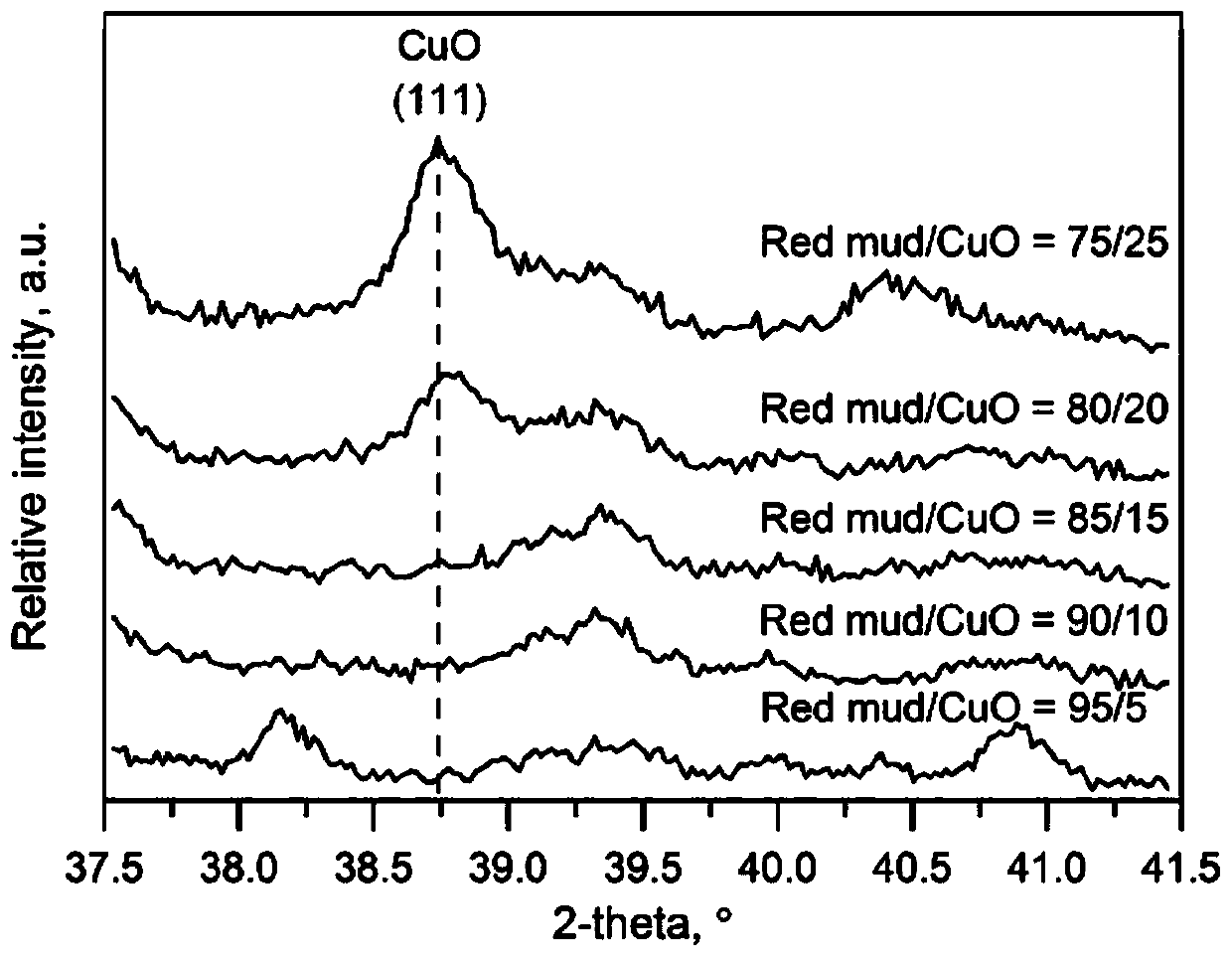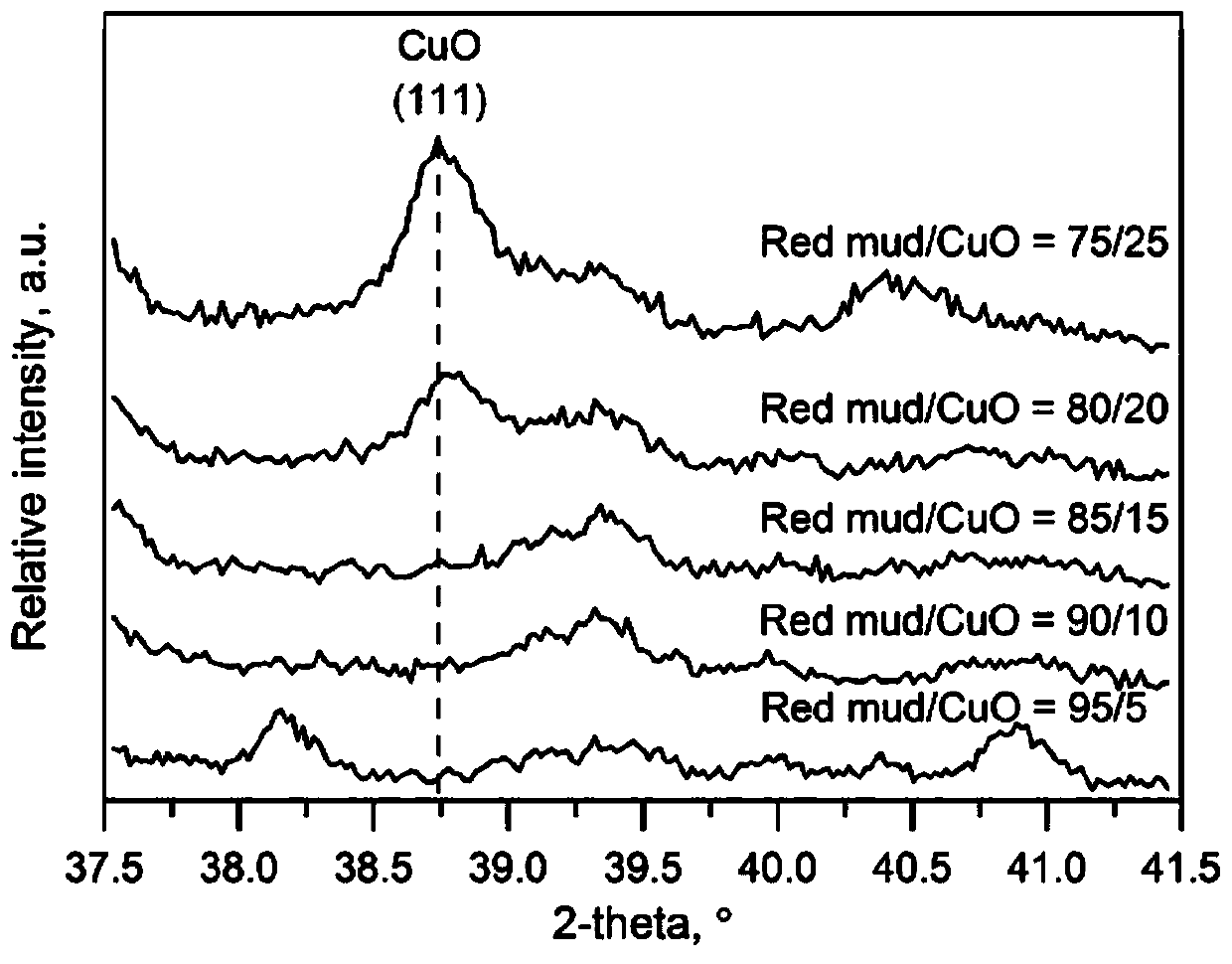Method for stabilizing metal copper in waste through generation of spinel
A waste and metal copper technology, applied in the field of metal copper, can solve the problems of huge energy consumption, erosion, complex treatment process, etc., and achieve the effect of optimizing the dosage ratio, good anti-leaching performance, and stable chemical properties
- Summary
- Abstract
- Description
- Claims
- Application Information
AI Technical Summary
Problems solved by technology
Method used
Image
Examples
Embodiment 1
[0030] The red mud from the aluminum refinery (mainly containing Fe 2 o 3 and Al 2 o 3 ) was dried at 120°C for 10 hours for later use.
[0031] As a method of stabilizing metallic copper in waste by generating spinel as an embodiment of the present invention, the method comprises the following steps:
[0032] (1) Utilize XRF spectrum analysis to measure the components contained in the red mud, and determine the content of iron oxide in the red mud;
[0033] (2) According to the weight ratio, mix the waste containing copper oxide with the dried red mud, and use a ball mill at 60rpm for 18h, dry the sample mixture at 105°C for 24h, and then use an agate mortar Grind for 10 minutes, further homogenize;
[0034] (3) the above gained sample is pressed into pellets of φ 20mm under a pressure of 250MPa;
[0035] (4) Calcining for 3 hours at a temperature of 1100°C and a temperature rise and fall rate of 10°C / min;
[0036] Wherein, the weight ratio of CuO and iron oxide in the...
Embodiment 2
[0038] As a method of stabilizing metallic copper in waste through the generation of spinel as an embodiment of the present invention, the difference between this embodiment and Embodiment 1 is: the weight ratio of CuO and iron oxide in the dried red mud is 15% .
Embodiment 3
[0040] As a method of stabilizing metallic copper in waste through the generation of spinel as an embodiment of the present invention, the difference between this embodiment and Embodiment 1 is: the weight ratio of CuO and iron oxide in the dried red mud is 20% .
PUM
 Login to View More
Login to View More Abstract
Description
Claims
Application Information
 Login to View More
Login to View More - Generate Ideas
- Intellectual Property
- Life Sciences
- Materials
- Tech Scout
- Unparalleled Data Quality
- Higher Quality Content
- 60% Fewer Hallucinations
Browse by: Latest US Patents, China's latest patents, Technical Efficacy Thesaurus, Application Domain, Technology Topic, Popular Technical Reports.
© 2025 PatSnap. All rights reserved.Legal|Privacy policy|Modern Slavery Act Transparency Statement|Sitemap|About US| Contact US: help@patsnap.com



